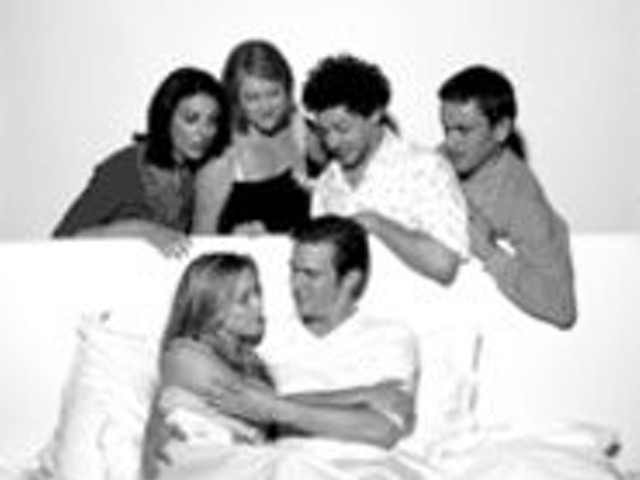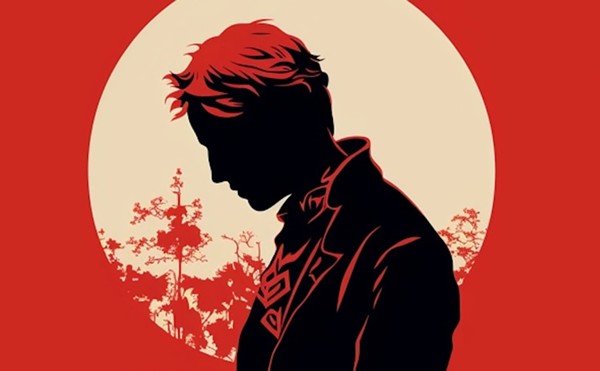The temple would lend 25 deadly soldier/monks to Nolan's traveling stage extravaganza, Shaolin Wheel of Life. In return, a percentage of the gate would go back to the temple to fund the continuing martial-arts training of thousands of Henan youth. Thus a quietly dignified religion/philosophy/self-defense system became a Broadway-style spectacular with fog, footlights, battle cries and cinderblocks breaking over bald heads.
What has been described as "Riverdance with kung-fu," Shaolin Wheel of Life begins with twenty men and five boys meditating before a large statue of Buddha. Incense wafts through the theater and the sounds of bells, gongs, flutes and chanting calm the audience. Before long, the music picks up and the red-robed monks leap to their feet and run and whirl, chopping and kicking at the air. They tumble and flip in arabesques and spar with exotic weapons. They snap bamboo sticks and iron bars over their bodies, lie on beds of nails and balance atop spear points. A few moments are particularly impressive: Standing on one leg, a child contortionist pulls his other leg behind an ear and slowly falls to the side, landing on the floor in a split.
"They all have a basic training in kung-fu," says Nolan, "but each individual then specializes in different aspects. For instance, we've got one monk, all he does is the two-fingered handstand."
The show has a storyline based in fact: A jealous king murders every monk but for five children, who rebuild the temple. During the climactic battle, the enemy army runs up the aisles onto the stage. At one point, the combatants fight while balanced atop poles (not unlike the Karate Kid's "crane-style" method). The massacre of the monks is stylized into a lyrical tableau of slow-motion throat-slicing and waves undulating along a bolt of blood-red fabric.
The monks had to adapt to some Western customs, including the rites of showmanship. At first they refused to bow, relates Nolan, asserting that they "can't accept any gratification." Only when the producer explained to the monks that bowing would provide a helpful punctuation for the audience did they agree to bow slightly every now and then. Most have adopted Western dress for their sightseeing excursions "because they just do attract an awful lot of attention," Nolan adds. "When you see ten or twelve bald-headed monks in orange robes going down the street, it does turn quite a few heads."
As direct descendants of the creators of the world's oldest martial art, these kung-fu masters are "the absolute heroes of martial arts," Nolan says. When the show's over, he adds, "some become fully fledged monks, some go to the cities and take various jobs and some go to Hong Kong and end up in Jackie Chan movies."





